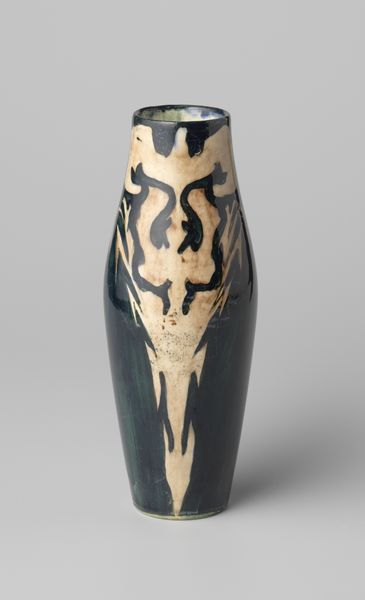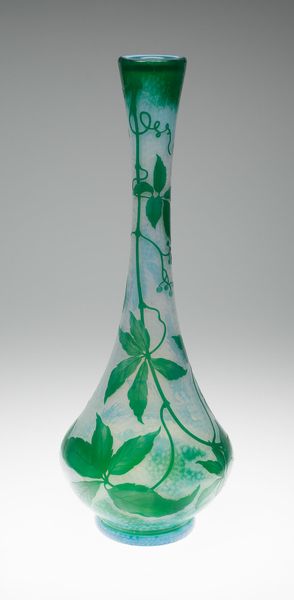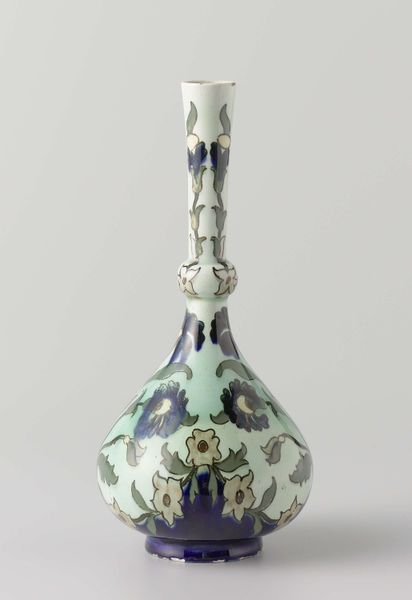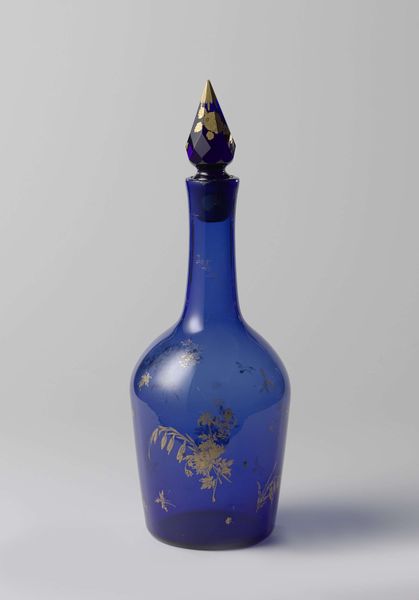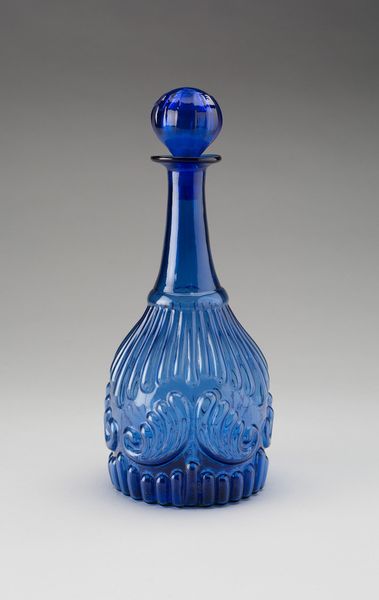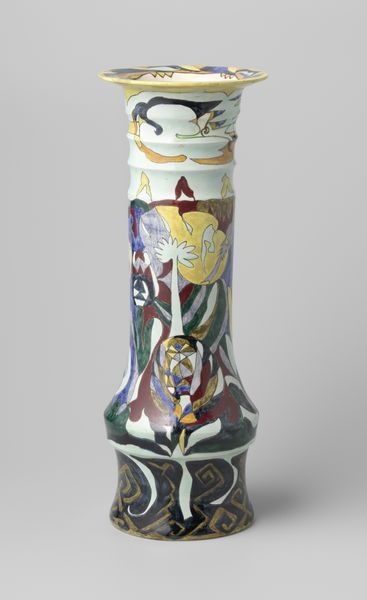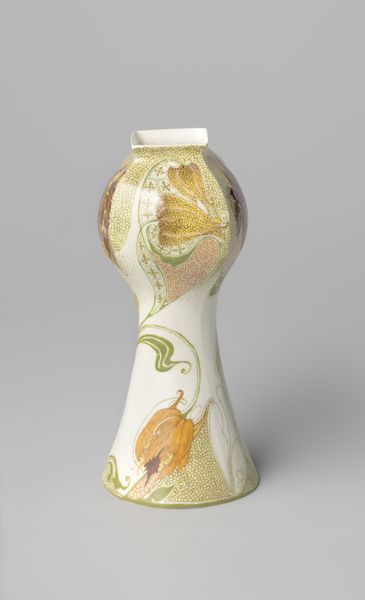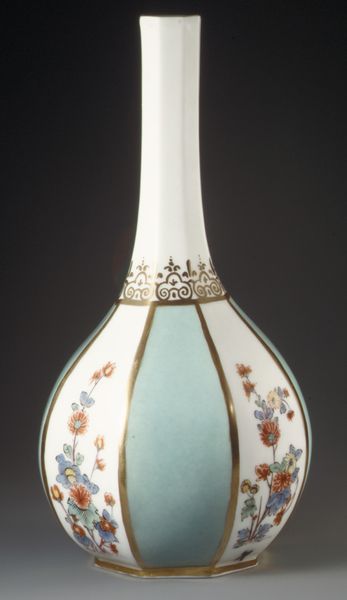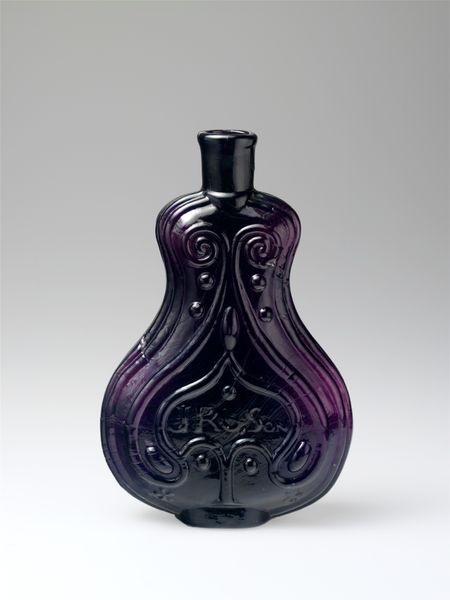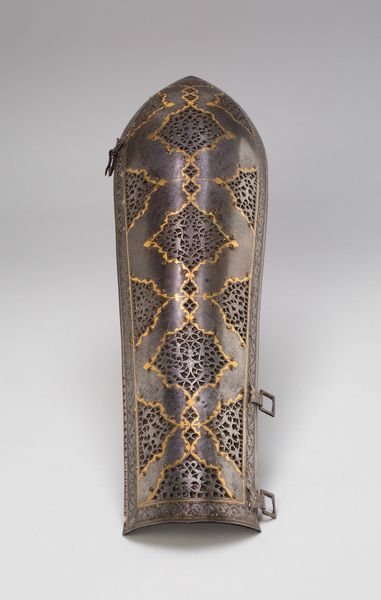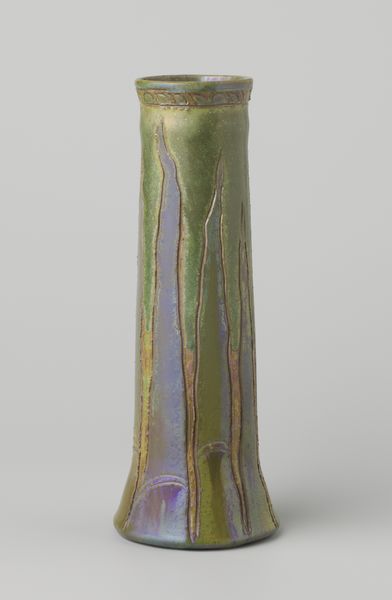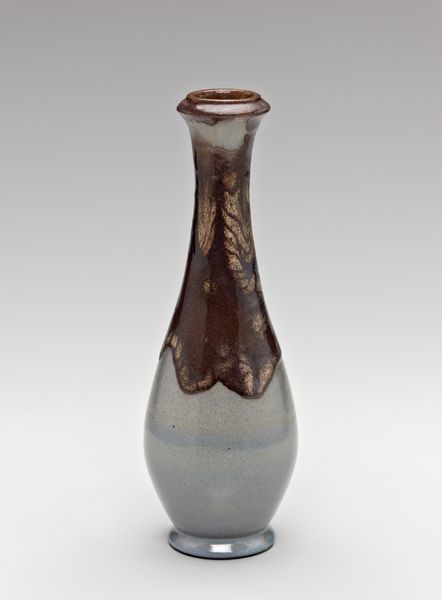
Vaas versierd in blauw, paars, geel en wit met ingekrast gestileerd decor c. 1915
0:00
0:00
ceramic
#
art-nouveau
#
ceramic
#
form
#
geometric
#
decorative-art
Dimensions: height 18.5 cm, diameter 6.3 cm
Copyright: Rijks Museum: Open Domain
Editor: Here we have a ceramic vase, dating from around 1915 and created by Plateelbakkerij De Distel. It is gorgeously decorated in blue, purple, yellow, and white with an incised stylized decor. The overall effect strikes me as both elegant and a little bit melancholy. What can you tell me about the vase? Curator: That's a keen observation. The melancholy feeling you're picking up on might connect to the historical context. Made in the Netherlands around 1915, during World War I, but before the Dutch fully felt the economic hardships of remaining neutral, objects like this vase fulfilled a cultural need. Editor: In what way? Curator: Consider that the Dutch maintained neutrality and benefited financially during the war. Decorative objects like this showcased prosperity and tradition at a time of continental upheaval. Do you see the way the Art Nouveau style, which favors nature and organic forms, is used to suggest stability in a world descending into industrial warfare? Editor: So, it is reflecting that need for stability. It’s more than just a pretty vase, it becomes symbolic through its form. It projects a sort of stoic beauty, I think. Curator: Precisely. The incised, stylized décor becomes a quiet act of cultural preservation. Think about the vase being placed in a bourgeois home. Its presence there isn't simply decorative; it's a statement of enduring values. Editor: So, even something as simple as a vase becomes entangled with the broader societal anxieties and values. Fascinating! I will certainly see these objects in museums with new eyes. Curator: And hopefully a better understanding of how design choices were very purposeful even during turbulent periods in history.
Comments
No comments
Be the first to comment and join the conversation on the ultimate creative platform.
